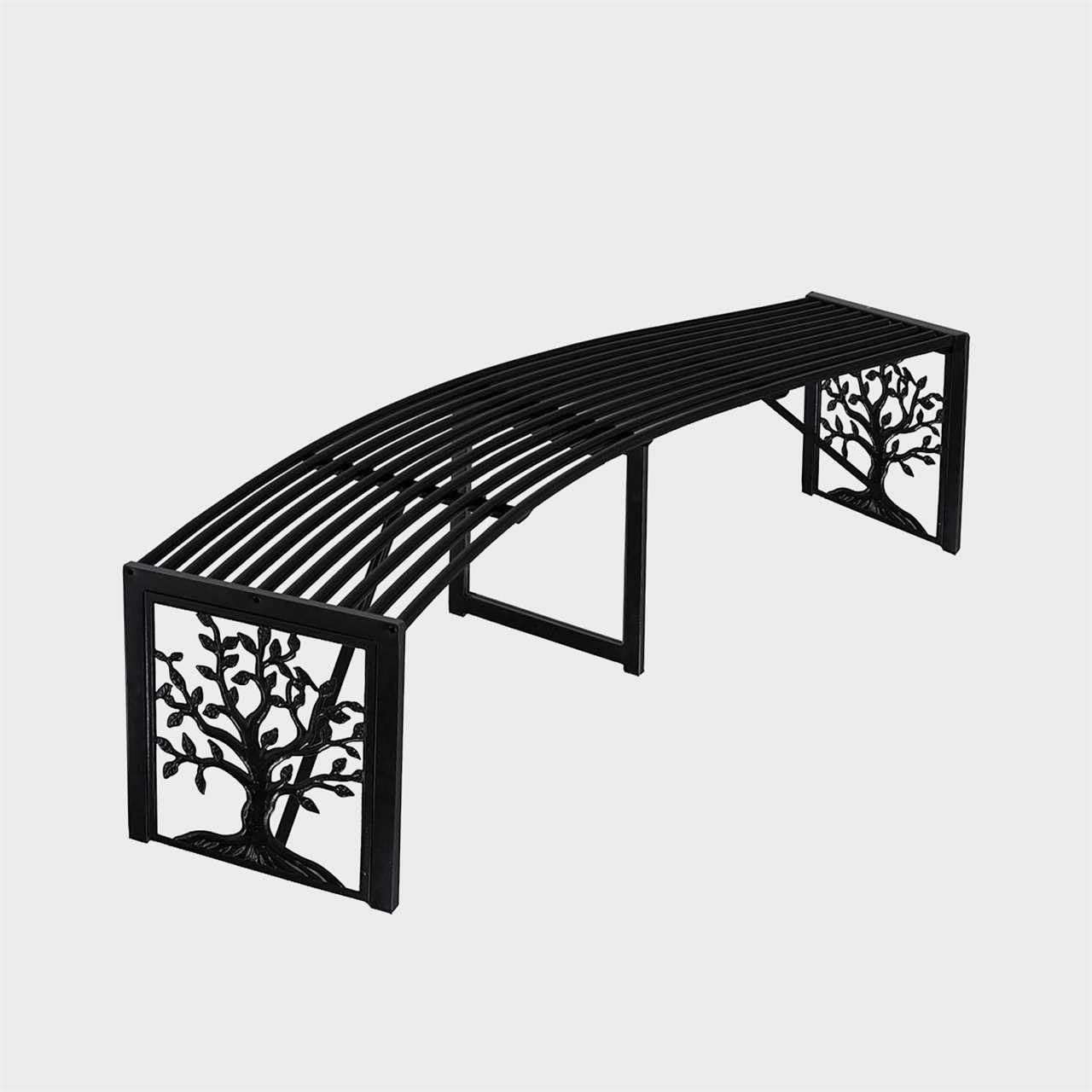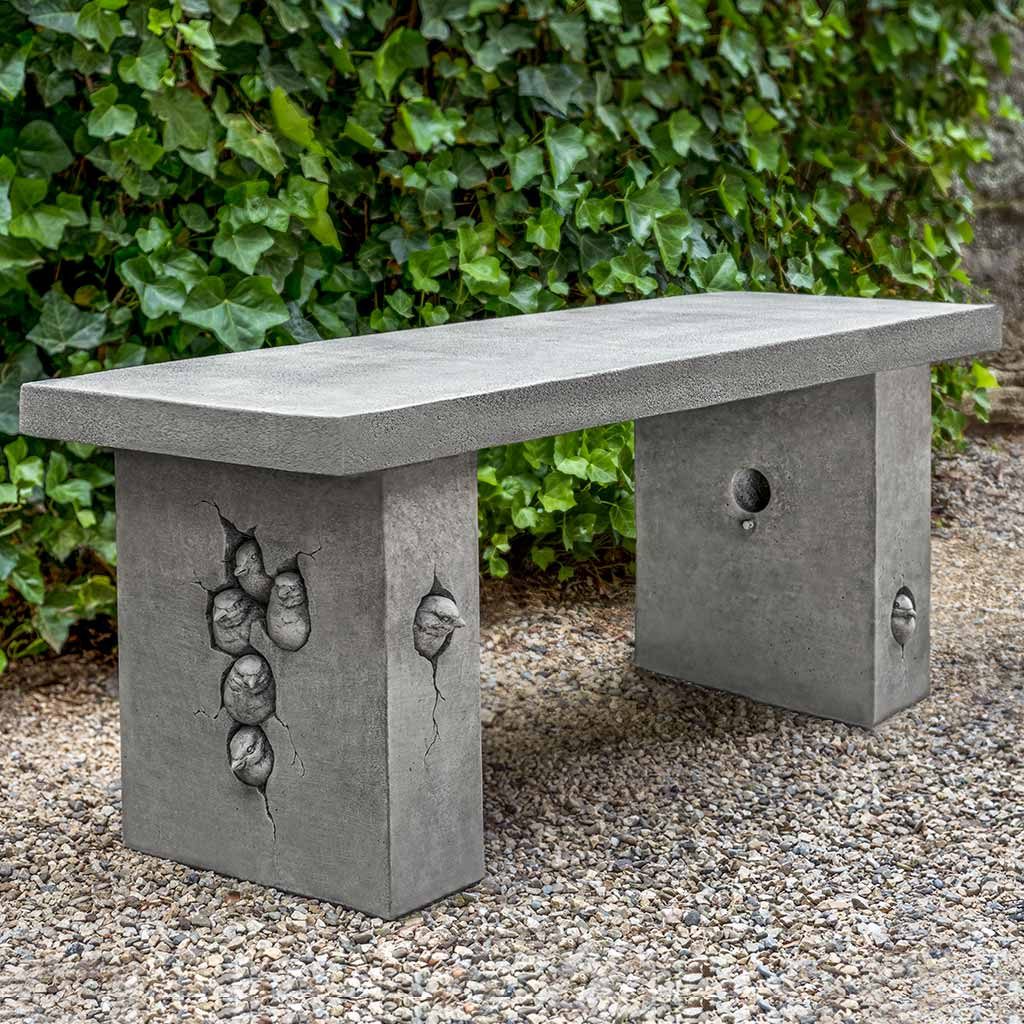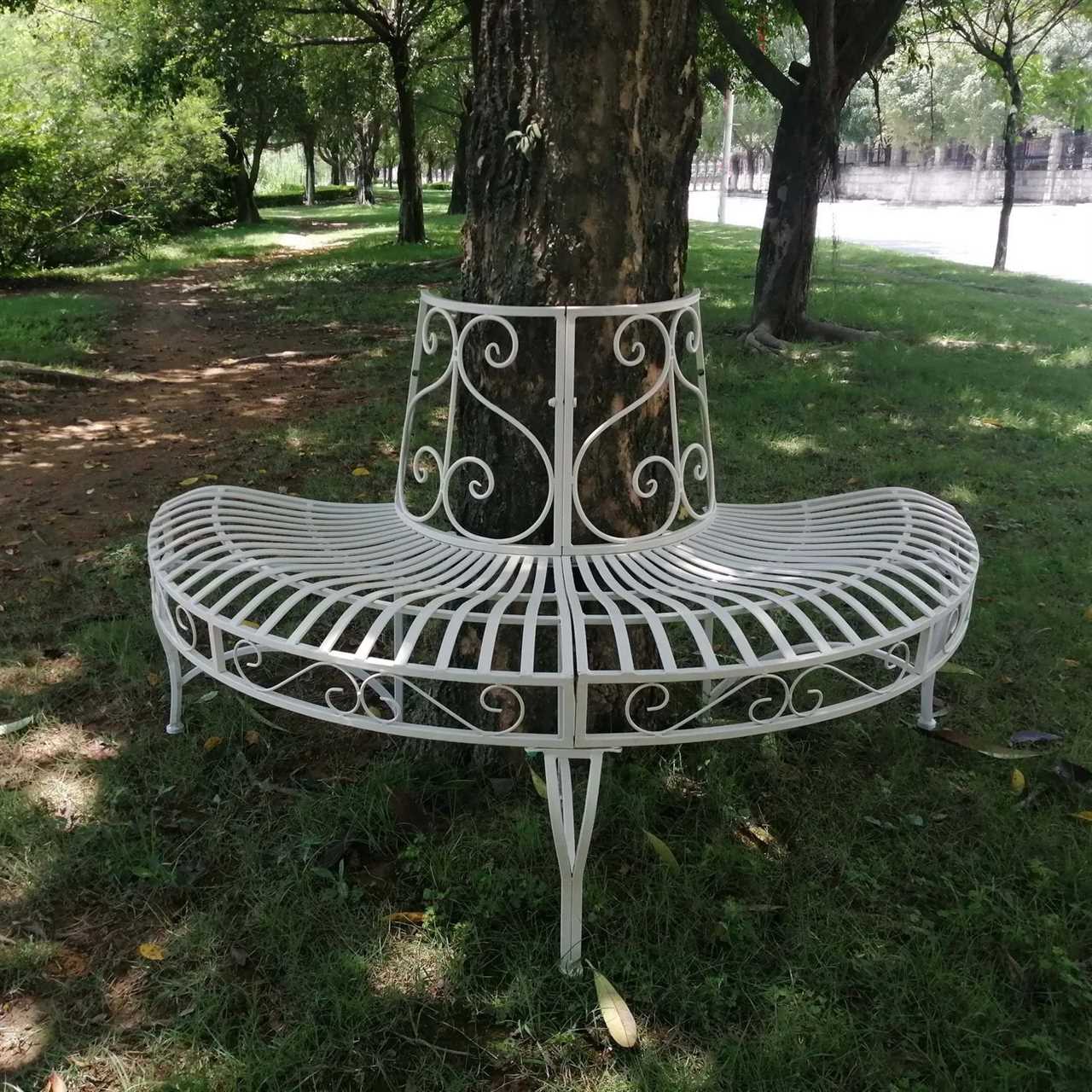An outdoor bench can be a place to read, relax and reflect, or it can be ornamental. How much you pay for it depends on function. “Customers spend more on outdoor benches they use and less on benches that are decorative,” says Jill Jacobson, senior buyer at Bachman’s Floral, Gift and Garden in Minneapolis, Minnesota.
People may like the notion of unwinding on an outdoor bench, but Jacobson says it often ends up a decoration. “I’ve sat in mine maybe three times,” she says. “I plant around it and paint it to match the color of my nearby door, which I paint often.”
To help you make the right purchase, here are some outdoor benches and features to consider, plus a look at five favorites.
Types of Outdoor Benches
Metal
Powder-coated steel, wrought iron and aluminum benches are most popular, Jacobson says, because they’re low on maintenance and high on creative detailing and designs. But most aren’t comfortable, putting metal mostly in the decorative category.
“An ornate, wrought iron bench with a scroll back and mesh seat looks pretty,” she says, “but you are not going to spend much time sitting on it unless you add cushions.”
Wood
Teak, acacia, eucalyptus and hardwoods are beautiful but require periodic sanding and finishing. Wood won’t get too hot in the scorching sun nor too cold in low temperatures, so it’s good for sitting. Wood also absorbs moisture, so after a downpour you can’t wipe it dry as easily as a metal bench.
Plastics
Plastic resin is not the most environmentally friendly material, but it won’t rust or dent and never requires painting. Commercial-grade polyvinyl chloride is durable with low maintenance. Recycled plastics are also low maintenance and less harmful to the environment because they’re made from repurposed material. Note that some plastics can become brittle and fade with sun and cold exposure.
Stone/Concrete
These are the most expensive, but offer timeless beauty other bench types cannot. “I call them benches for a lifetime,” says Jacobson. “They’re usually smaller, three feet long and not five or six, and heavy. Once in place, they don’t move.” She sells stone/concrete benches by Campania International.
DIY
Making an outdoor bench from wood is often the least expensive and most satisfying way to go. Here are plans to build one garden bench without a backrest and another bench with a backrest.
A stacked-stone bench is easy to make. Garden centers and landscape-supply stores sell decorative rocks, or you can collect your own to make two stacks supporting a longer bench rock. Another DIY option is a stone-inlay concrete bench.
Outdoor Bench Features
Location
If you intend to sit on your outdoor bench, pick a level location with some shade and a view that gives you “comfort and joy,” as Jacobson says. Before you buy or build, make a mockup from scrap wood and place it in several locations to see if it looks too big or out of place.
Tipping
Some benches feature feet you can secure to prevent tipping in a storm. Nice, but you have to put down concrete or a similar sturdy base and screw the bench to it. Some bench designs have legs that sink deep into the ground.
Style
Oodles of bench styles will tempt you in a store or online. Make sure you can return it, because that buddy bench or kissing seat that’s so cute in the store may not meet your approval once it’s in your backyard.
Additional seating
It’s nice use your bench for additional seating at large outdoor gatherings, so aim to approximate the look of your outdoor tables and chairs.
Backrest or bench?
For comfort and extended use, a backrest is essential. But for a decorative bench in a small space, a backrest may make the bench appear too dominant in the yard, when a low simple bench is just right.
Storage space
Leaving the bench outdoors all year will accelerate the weathering and require more maintenance. Purchase a cover or store the bench in a garage or shed.
Favorite Outdoor Benches
Choosing an outdoor bench is personal. Here are five of my favorites:
Curved metal tree of life bench

This curved backless metal bench will look great in that special place near your garden.
Birdhouse bench

Birds nested in the upright supports add a light touch to this heavy cast stone bench.
Reclaimed wood and iron bench

The reclaimed lumber combined with the powder-coated iron makes this charming three-foot bench an eco-friendly winner. Try it by your back door or in the garden.
Tree bench

Use this semi-circle bench on its own or with another piece to wrap around a tree. Cushions help you and your guests enjoy the shade and conversation.
Did you miss our previous article...
https://rsssuperfeeds.com/life-hacks/20-tips-and-tricks-to-make-your-garage-or-workshop-more-functional






